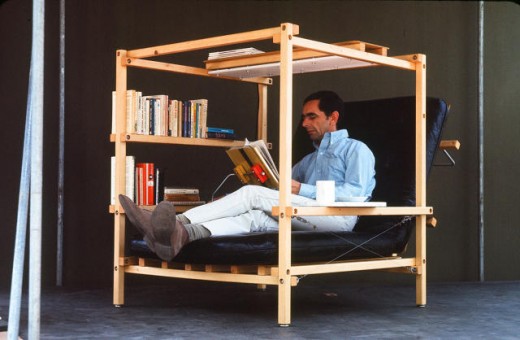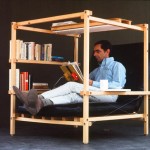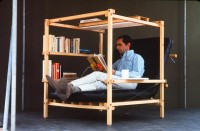What Killed the Sixties combat For Utopia?
Andrew Blauvelt, curator of a approaching exhibition at the Walker artwork heart, unpacks “Hippie Modernism.”
July 27, 2015
The tangible improvements of as of late continuously grow from the radically conceptual ideas from the previous, a conception that the Walker artwork middle explores in its approaching exhibition Hippie Modernism: The combat for Utopia.
The counterculture movement of the 1960s occupies a divisive situation in historical past. was it a failure or successful? Artists, designers, and architects have been armed with utopian beliefs as they grappled with concerns like war, environmentalism, racism, and fairness. They saw promise in technology and a brilliant future. They proposed new ways of living that had been about group and peace. They preached free idea and expression. Then the rosy future unexpectedly turned bleak. the subsequent decades were conservative via comparability and were pushed through skepticism and consumerism.
“It’s difficult to identify another period of historical past that has exerted extra influence on latest culture and politics,” says Andrew Blauvelt, a senior curator on the Walker and the exhibition’s organizer. He defines the hippie-modernist technology as spanning the last decade between 1964, when the Merry Pranksters took their well-known acid shuttle throughout the usa, and 1973/1974, when the oil hindrance rankled the nation.
upfront of the exhibition, which opens October 24, Blauvelt spoke with Co.Design about the life, loss of life, and rebirth of the counterculture ethos.
Co.Design: Why is now the precise time to examine modernism and hippie tradition together?
Andrew Blauvelt: a couple of years ago, i spotted quite a few latest designers, architects, and artists who were referencing things from this era—its attitudes and even specific works from the time. Why is the passion now? i needed to seem a little bit bit extra cleanly on the sources and the guidelines all through that historical moment.
What attitudes from then do you see mirrored in the artists and designers of lately?
the information around social-impression design, humanitarian design, and public-pastime design. I additionally see it in additional fringe areas like speculative design or vital design, which is extra propositional or conceptual. The legacy goes again to this era as a result of plenty of the structure and design within the convey does not confirm skilled practices—it can be in point of fact a critique of society’s use of design or architecture. It has more of a important disposition to it. It resonates these days. Artists now faucet into an identical modes of know-how immersion, performance, and multimedia—a kind of blurring of the disciplines and crossing of the disciplines.
And what about explicit designs that share an identical motivations to the counterculture technology?
A classic one can be Archigram‘s info Gonks, which is a precursor to Google Glass. It was once a conceptual product—Archigram made a prototype—but instead of getting a basis in computer systems, it based across the notion of instructional tv. information Gonks had been glasses that you would wear and they’d increase your feel of truth. Archigram also expected issues like digital fact so the exhibition options collages they did for info Gonks. any other undertaking called the Room of 1,000 Delights anticipates the Holodeck [from Star Trek]. There are some truly direct parallels between what used to be happening then and now.
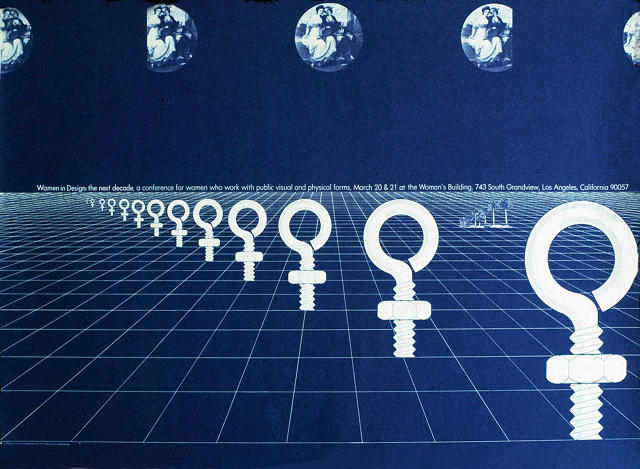
talking of the Holodeck, it seems like science fiction of the previous is quickly changing into the fact of the current.
From a normal social and cultural attitude, the exhibit is extremely resonant with nowadays on account of the grand narrative of the Sixties. Steve Jobs talked about this, without hippies you shouldn’t have non-public computing—it comes directly out of that time period so there are quite a few parallels.
Environmentalism transforms within the 1960s and 1970s and turns into the environmentalism we bring to mind today—we get the primary experience that people have an impact on the environment. things like the complete Earth Catalog start the use of metaphors about how humans will have to live in team spirit and in the case of the remainder of the arena. “Eco” design of lately truly wouldn’t be imaginable with out its roots within the Sixties and the Nineteen Seventies.
Social protest actions also echo today. we now have some work from Emory Douglas, the art director of the Black Panthers’ newspaper and the crew’s Minister of culture, in the exhibition. There are equivalent racial problems nowadays, exemplified throughout the Black Lives matter motion. There are these continuities between then and now that run throughout the show—and there seems to be plenty of them.
So what killed the Sixties struggle for utopia and put a kibosh on that momentum?
Richard Nixon! neatly, there were a couple of factors and i try to specific that within the exhibition.
All forms of turmoil happened within the late Sixties. Anti-war protests, civil rights protests, a confluence of protests on many fronts. This was once also happening in Europe and South america. It used to be a moment the place it gave the look of society might transform.
the concept that emerged after WWII that man may have the entire technological means to make scarcity and poverty disappear. that could develop into the whole world as a result of those are the standard conflicts for war. This second of turmoil, this clash of generations of cultures and values has an abrupt ending to it, which is regularly recognized around the election of Nixon to the presidency on a “regulation and order” platform.
In Europe, the failure of the may 1968 uprisings in France and Italy factored into it. in terms of this shortage argument, I put the top around 1973–1974 in the exhibit as a result of that’s when the OPEC oil trouble hit. It adjustments the arena’s stage because it institutes the notion of scarcity and no longer “disappearing” shortage.
What I argue is that there are practical via-strains. nearly every important and totally different thing that i will bring to mind nowadays is come what may tied again to this era. The conservative values of the 1970s and Eighties rewrote the Nineteen Sixties as a kind of failure, however it depends upon when you wish to have to come to a decision failure happens. in the event you observe this historic second these days, it looks like less of a failure. numerous the ideas and ideas have actually modified the best way we think about things.
it’s worthwhile to say that the utopian best wasn’t necessarily killed outright in the Nineteen Seventies, it used to be just put right into a deep sleep.
i think the opposite fascinating factor about utopia is that the idea comes out of literature. The conception of utopia as one thing that must be accomplished and you’re is done is truly false. Utopia is an argument that’s about what’s fallacious with the present and what’s proper concerning the future.
in the exhibition’s catalog, you point out that high-brand new architects of the Nineteen Sixties didn’t interact with social concerns. How are the 2 aspects of high architecture and the values of hippie culture more unified these days than previously?
up to now it was once more oppositional. Hippie modernism predates submit-modernism. We speak about postmodernism starting within the Seventies as being about historical references, being slightly conservative, and a being a critique of modernism. Hippie modernism is really the primary critique of excessive modernism.
numerous the architects whose work is in the convey got here proper out of faculty. they are in their 20s doing actually conceptual work and rejecting the skilled container of architecture for numerous reasons. The Italians were the most radical and they were influenced with the aid of Marxism and Socialism. The younger architects have been highly essential of a lot of modernist makes an attempt. They saw modernism as a kind of failure so they wished to advise one thing counter to that.
There are parallels in design, too. on account of the improvement of the publish-warfare consumer society there was this moral conundrum for product designers. How do they participate on this financial system? In what ways? Are there every other choices?
some of the touchstones in the express is Victor Papanek. He pioneered the idea of humanitarian design, but was once completely ostracized by using the skilled industrial design neighborhood on account of his evaluations. He notion industrial design of the time was once facile styling, or simplest being finished for company pursuits when there have been people in need of design. He used to be an recommend for the disabled and the entire individuals who did not receive designed things as a result of everyone not noted them.
lately, it seems extra widely understood that there is a complete world out there. there may be nearly a flip to it where business individuals will look at the billion people who are underserved as a potential market. So it can be a whole more or less inversion of what was going down then as a critique. you might have more of a consensus now that everybody needs design. The notions of ethics and have shifted and industry has shifted as smartly.
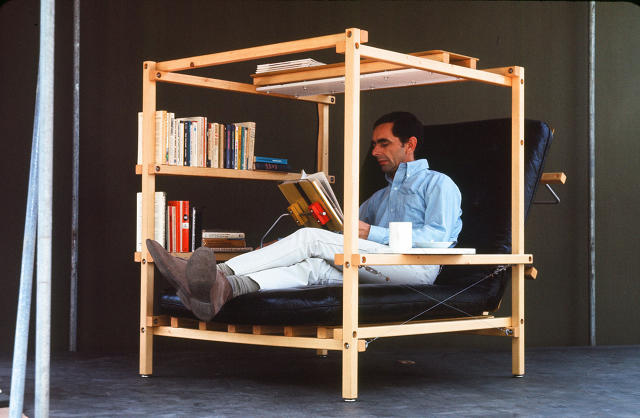
In researching the show, did you determine any unsung artists and designers that deserve more recognition and more of a spot in history than they currently occupy?
There are a variety of artists who were working between disciplines and that’s in point of fact sizzling at the moment. It wasn’t essentially actually sizzling then for the reason that artwork market was once forming. quite a lot of the artwork history that we find out about—minimalism, submit-minimalism, conceptualism—was once chosen to be promoted inside the techniques of the artwork world. various the funkier stuff didn’t get that so much promoting. today, artists and designers are all in favour of developing immersive environments, working with technologists, and working with engineers so the previous practitioners are starting to get their due.
there’s the team known as USCO, an acronym for the company of Us. They were a gaggle of poets, engineers, and digital artists and so they created immersive installations. this is also the start of installation art. they may be coming again into reputation.
numerous the conceptual architects are hot now because what they have been doing was once mostly speculative. They weren’t building structures, they have been making installations. a group that we stock prominently in the show is Haus Rucker Co., which is out of Vienna. quite a lot of up to date artists directly reference their ideas about space and surroundings. Tomas Saraceno, for instance. Olafur Eliasson, who does spectacular huge-scale environmental tasks now, could be a reference to that period.
numerous the photo design can be attention-grabbing. We’re displaying work from Ken Isaacs who is a photo designer. His information box is a picket chamber about 10 or eleven foot sq. outfitted with 24 slide projectors that display photography on the walls, floor, and ceiling. He was truly interested—like a lot of people on the time—in Marshall McLuhan’s concepts of how communication would trade. He was once interested within the bombardment of images and the fast absorption of pictures so he would reduce pictures out of magazines and make slides out of them for these environments. he is had a little little bit of a rebirth today.
We even have some DIY projects within the express and that’s the reason in reality scorching at the moment.
DIY tradition is any such commodity now. as an example, one knitter made $1 million in a year from her Etsy keep.
all of the alignments are there now. you’ve the internet, a distribution community, you’ve gotten a platform through which to have interaction that level, you might have a broader market. again it can be know-how.
Evelyn Roth, who was once in Vancouver at the time, pioneered what changed into the sphere of fiber art but she was really known for doing recycling initiatives. She salvaged old video tape and crocheted with the fabric. She would take apart old sweaters and reweave them into new makes use of. And that more or less prefigures this upcycling perception.
Newton and Helen Harrison had been early eco artists and the museum is restaging a undertaking they did in California in 1972. it’s known as portable Orchard and it used to be a part of their Survival sequence in which they explored the interface between know-how and nature. it’s a 18 citrus timber planted in a windowless gallery underneath develop lights—an test on what survives. They later turned into well-known because they were one of the vital very early artists coping with problems with climate change. It merges into environmentalism.
How do you suppose designers these days must reconcile the perception of utopia with the necessity for pragmatism?
i believe the prerequisites nowadays permit for each. In a technique, the issue was once that there was once all of this really radical, interesting, speculative considering going down in the late Sixties and early Nineteen Seventies. Then the design and structure professions changed into increasingly more professionalized in between then and now, which is not necessarily a bad factor. lately I see that the new generation of designers is extra concerned with these more speculative and extra conceptual ideas. as of late it’s possible you’ll name it being entrepreneurial.
Now you might have methods and expertise in position that permit concepts to unfold quicker and sooner and they can take root in methods they could not back then as a result of conversation was slower and the market was different. That was the generation of the mass market. it can be a number of niche markets now. The methods, know-how, considering, and funding these days permits some things to occur far more fluidly and simply than they did prior to now.
there is continuity of the prior to the current. there may be this dialog and that’s what i’m hoping folks get rid of from the exhibition.
(158)

